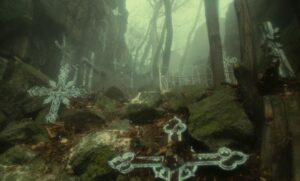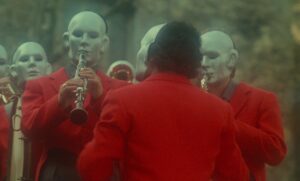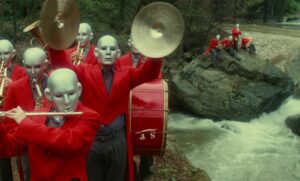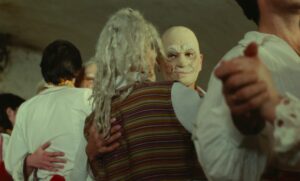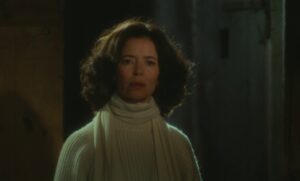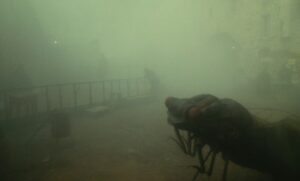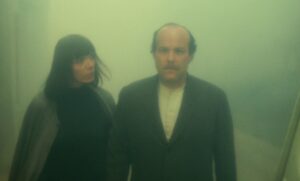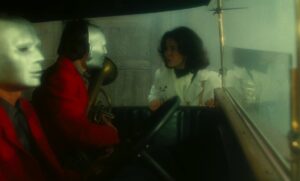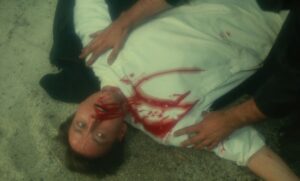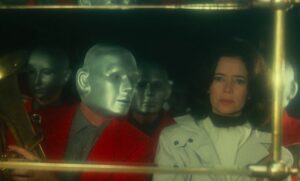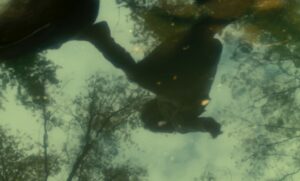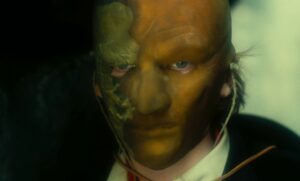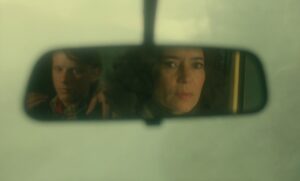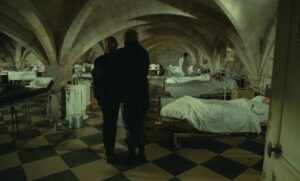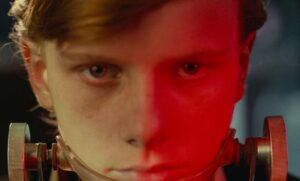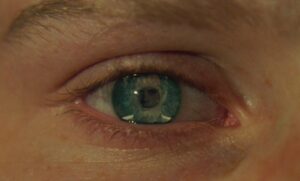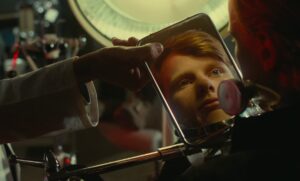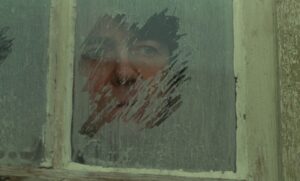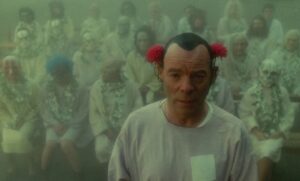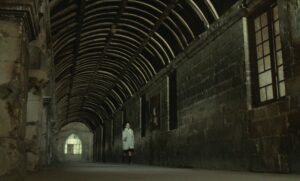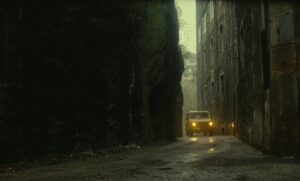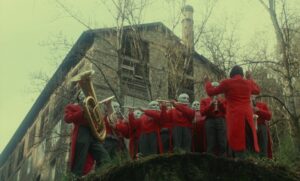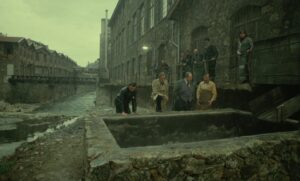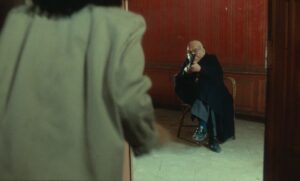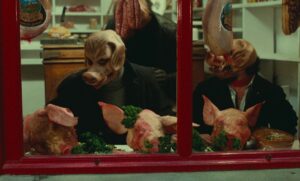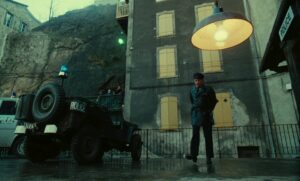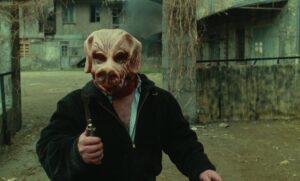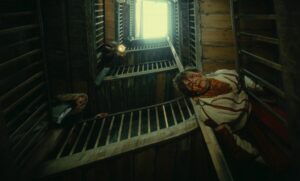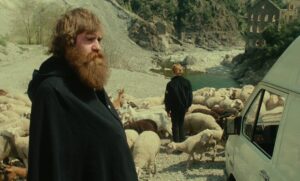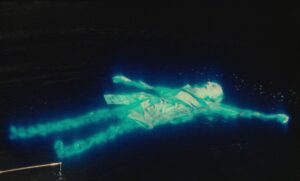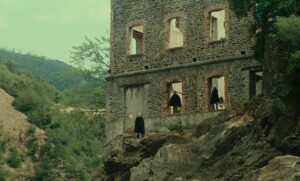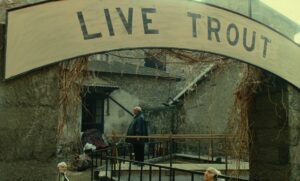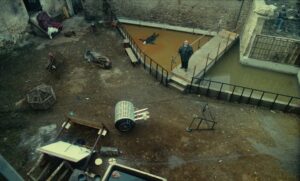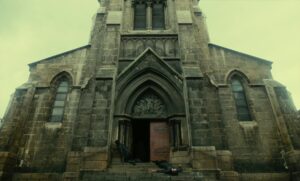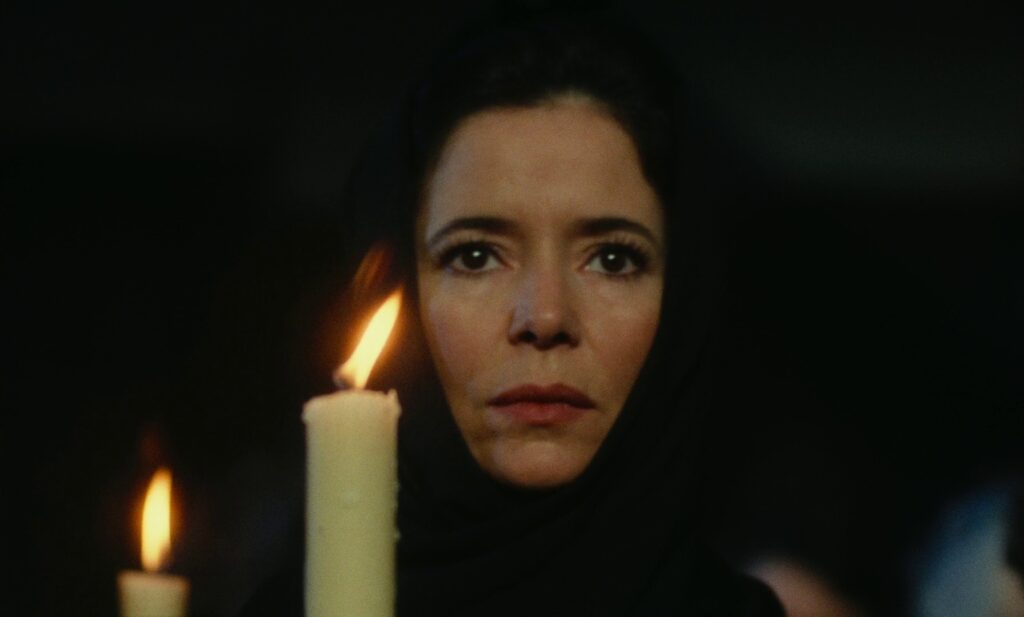
When you watch Litan (1982), you’re not just in for a weird, surreal horror movie. What Jean-Pierre Mocky gives us is a trip through a fractured psyche blurring the lines between reality, dreams, and death. If you’re into films that make you question everything you just saw, this one’s a goldmine for psychological exploration.
So, let’s check out what’s really going on beneath the surface of this cult classic.
Welcome to Litan: A Town Stuck Between Reality and Madness
At the heart of Litan is the town itself. It’s like it’s got its own personality. One that’s deeply messed up. The place feels off from the get go. It’s shrouded in fog, everyone’s wearing masks, and the locals are acting weirdly detached. It’s the kind of town you’d avoid if you weren’t stuck in it. The weird annual Festival of the Dead just adds another layer to the town’s already creepy vibe. But here’s the thing: the masks and bizarre behavior aren’t just for show. They’re representing something deeper. In psychology terms, think of the townspeople as trapped in their own repressed identities. They’re not really themselves; they’re projections of their darkest fears and desires. They’ve put on these figurative masks and now they can’t take them off.
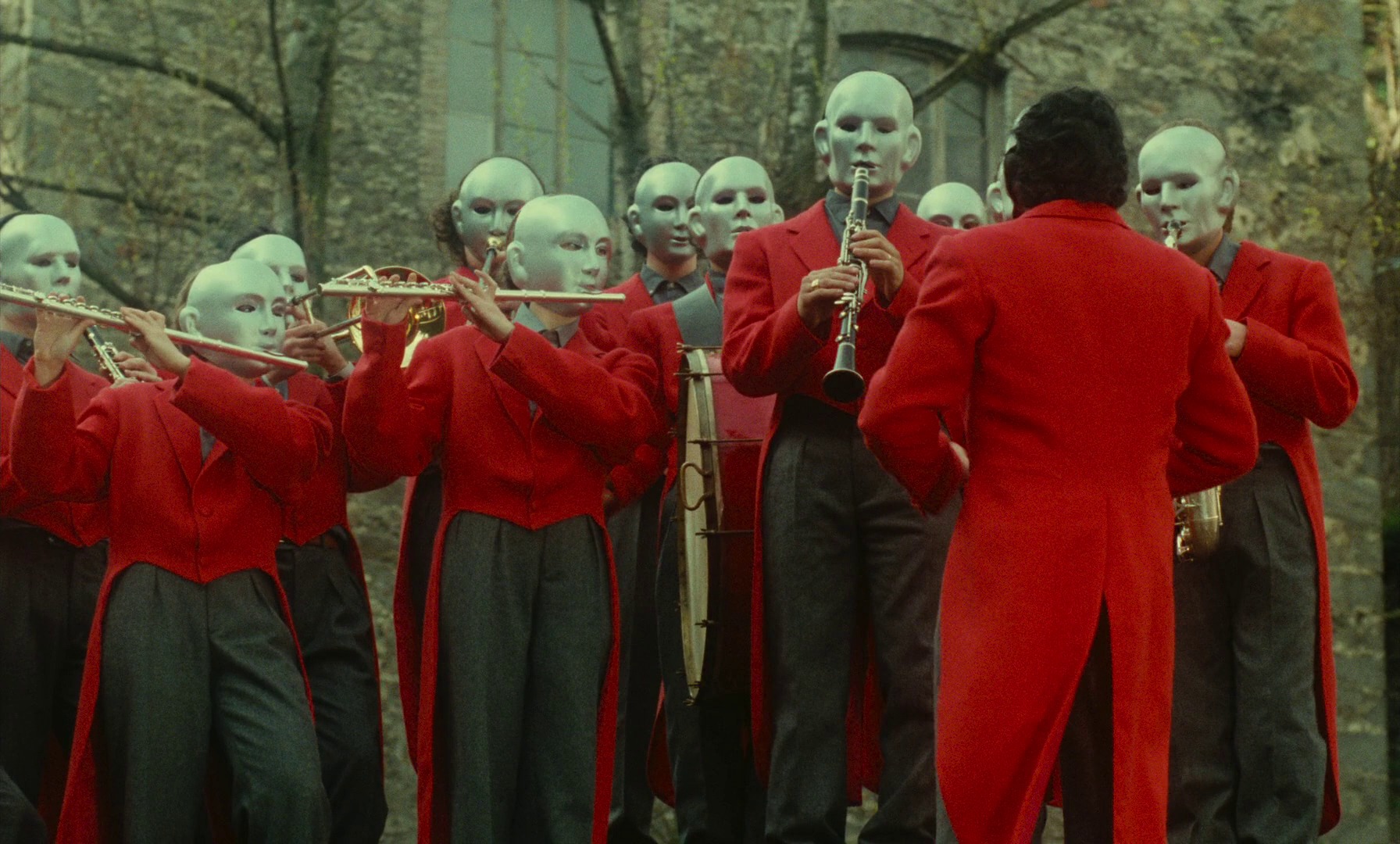
Nora’s Nightmare: Is She Dreaming or Is It Real?
So, Nora, the main character, has this disturbing dream at the beginning of the film where she witnesses Jock’s death. It’s not just a random nightmare; it kicks off this whole strange journey where she starts losing touch with what’s real. It’s as if the dream is seeping into her waking life, like she’s living in some twisted parallel universe. Her experiences seem more like a psychological defense mechanism than a linear plotline. On a deeper level, Nora’s whole trip feels like a dissociative state, where she’s trying to escape from some trauma or emotional pain, but in the process, she starts losing her grip on reality. Her mind is desperately trying to shield her from something too heavy to deal with, but instead, she just gets pulled into this endless nightmare where the lines between dream and reality are totally blurred. It’s the kind of thing you see in people who’ve gone through a traumatic experience, where their mind tries to protect them by just detaching from everything.
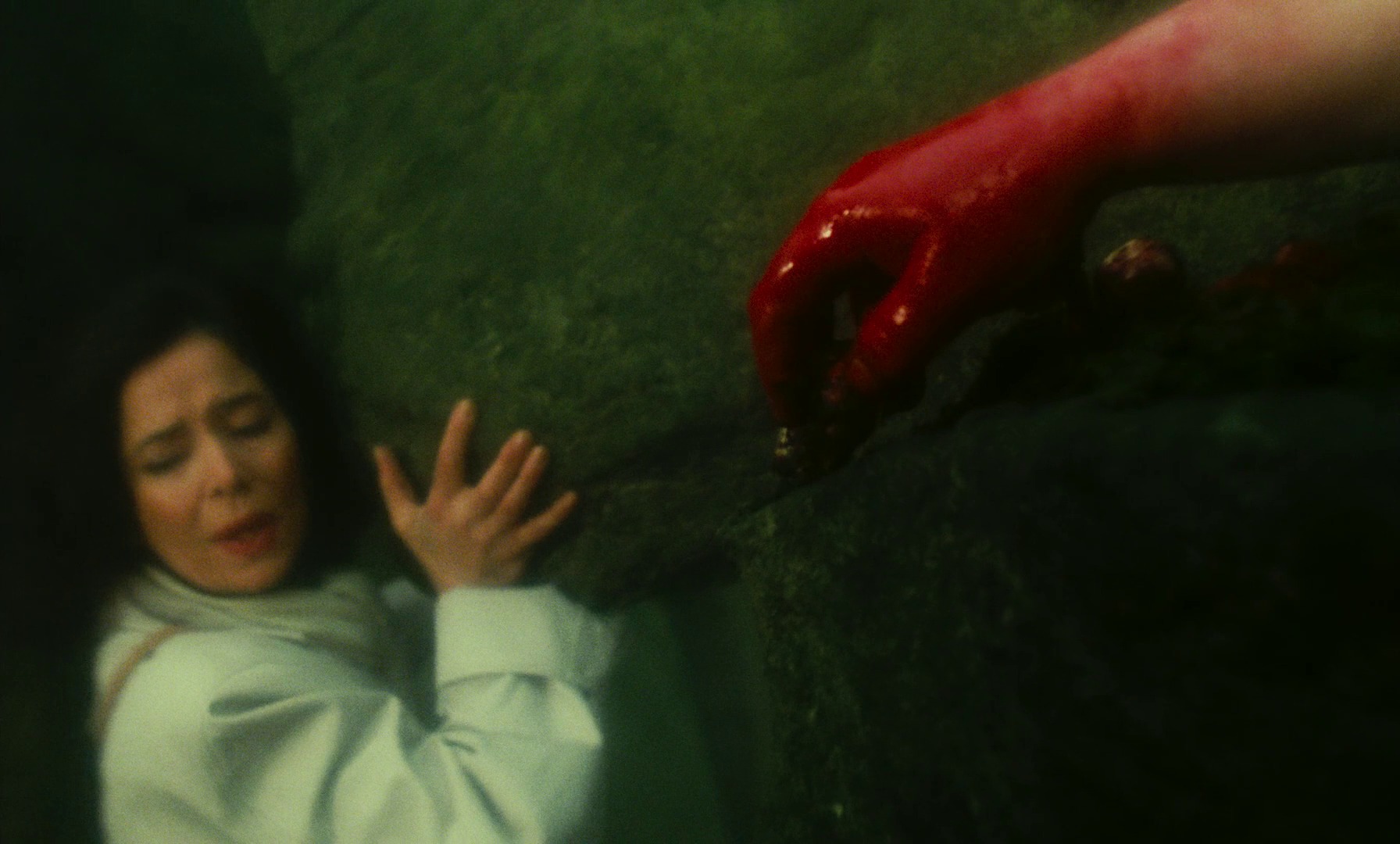
The Doctor Who Won’t Let Go of Death
Dr. Julien’s role in all this is pretty essential to understanding the psychological theme of the movie. He’s this mad scientist figure, obsessed with the idea of bringing the dead back to life. Sounds like your typical horror trope, right? But there’s a psychological depth to it. Julien’s experiments aren’t just about playing God; they’re about trying to defeat death itself. It’s the ultimate refusal to accept loss, to move on from grief. This kind of behavior taps into something a lot deeper, a fear of finality. In psychoanalytic terms, Julien represents the ultimate denial of death. He refuses to accept it and, in doing so, becomes completely consumed by it. It’s a kind of hubris, where he believes he can control something as fundamental as life and death. And in the process, the town becomes infected by this denial. They can’t properly mourn because they don’t even believe death is final. The whole town’s psychosis is a product of this refusal to face the inevitable.
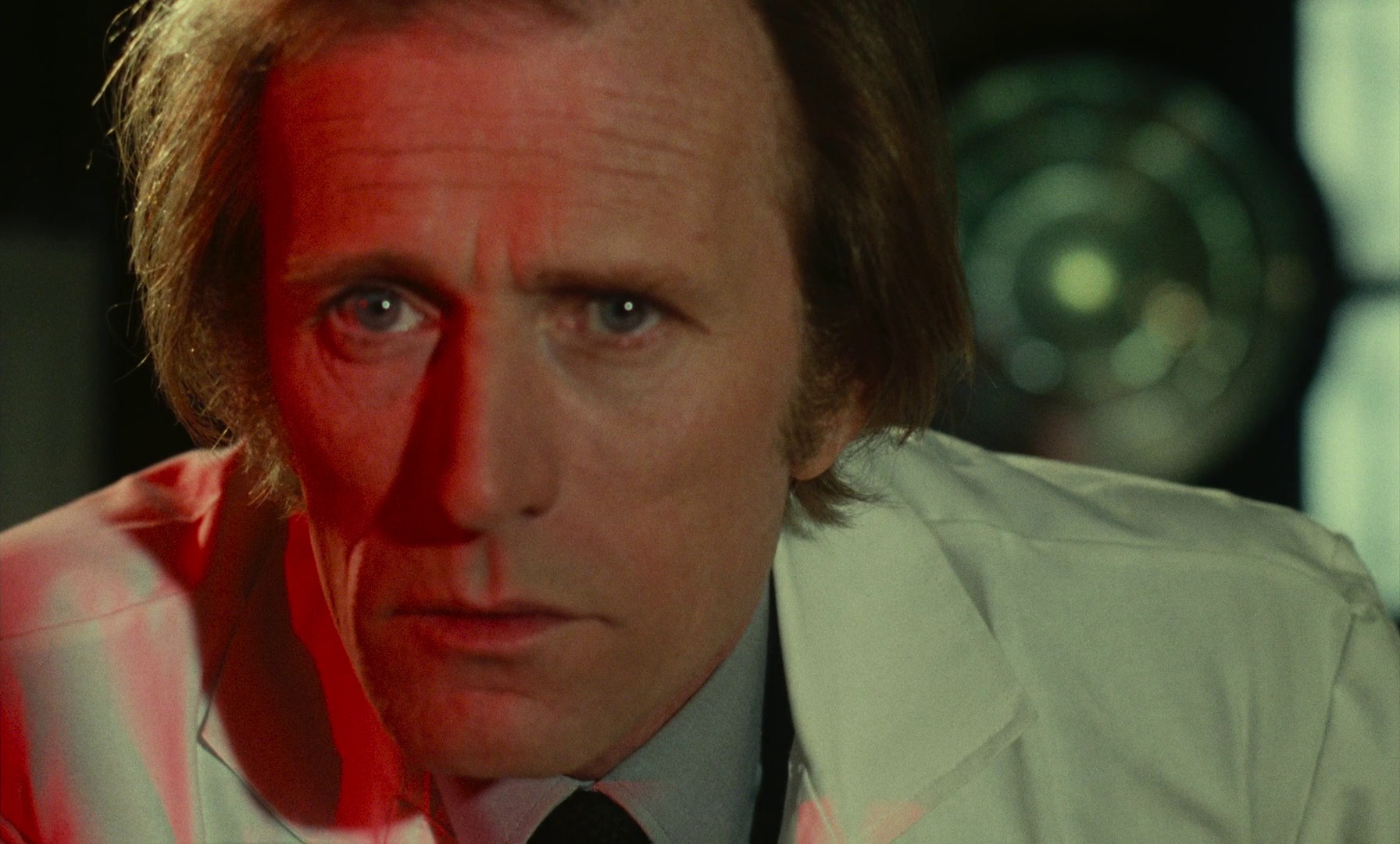
The River of Souls: A Journey Into the Subconscious
One of the most striking visuals in Litan happens when Nora and Jock float through this dark, foggy river in a coffin. It appears as though they’re traveling through some kind of limbo. The river here symbolizes a passage, both literally and figuratively. It’s the kind of symbolic imagery you see in a lot of psychological or mythological stories, a transition between life and death, the conscious and the unconscious. It’s a powerful visual because, just like in a dream, the rules of the world are turned upside down. The coffin (a symbol of death) becomes a vessel for escape, but it’s unclear if they’re actually escaping or just drifting deeper into their own minds. This scene, like much of the film, is all about the uncertainty of transition. It’s a psychological crossroads: are they reborn, or is this just a trap they can’t escape from?
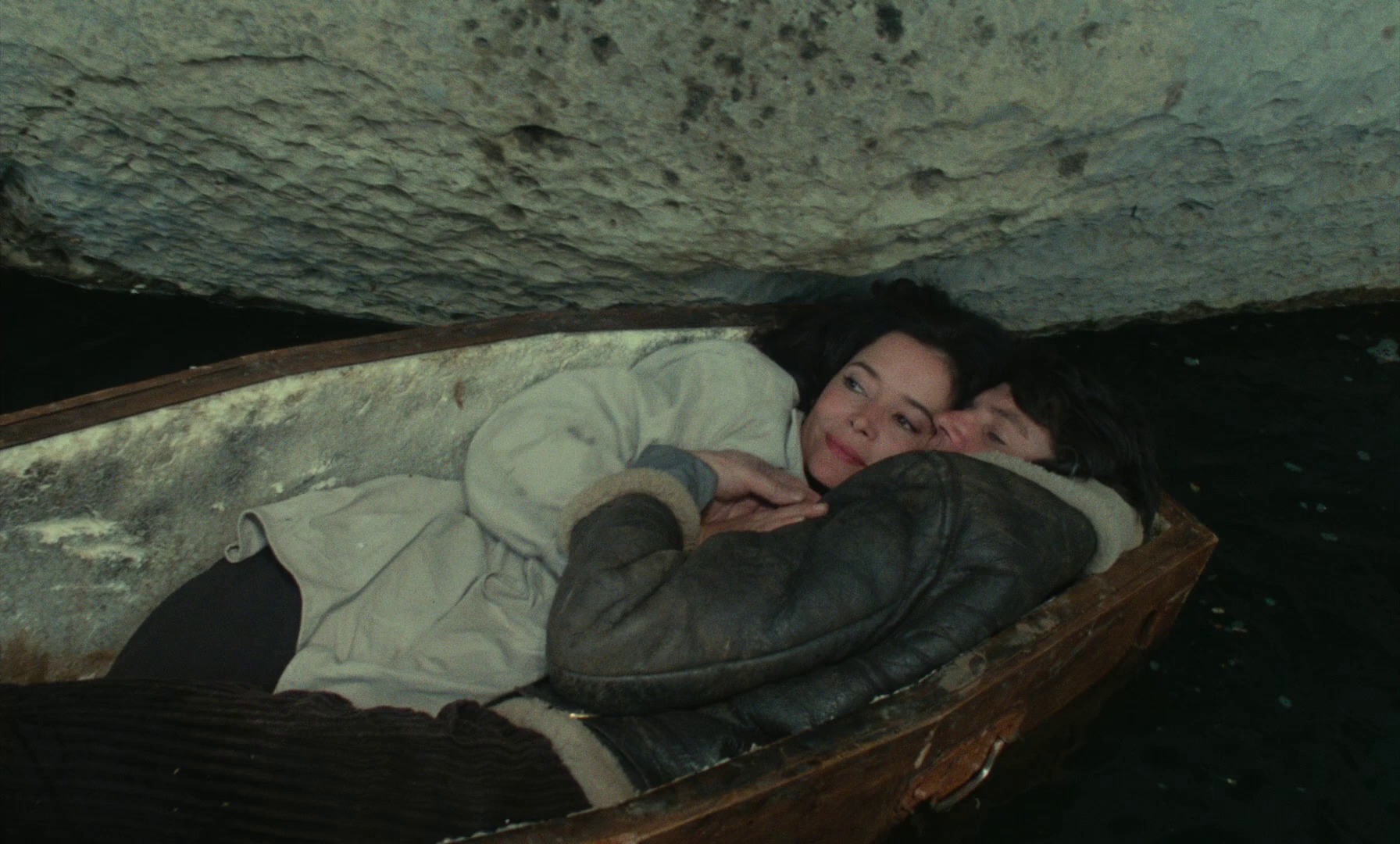
Embracing the Uncertainty
At the end of the day, Litan isn’t a movie that hands you answers on a silver platter. Instead, it drops you into a world of confusion, where reality and dreams collide and the psychological weight of death and identity looms over everything. It’s the kind of film that leaves you with more questions than answers, and that’s exactly what makes it so intriguing. What Mocky does here is give us a mirror of our own unconscious fears. The weirdness of the town, the surreal dream sequences, and the characters’ distorted motivations all reflect the internal struggles we go through when faced with the unknown. Litan is about how we deal with the things we can’t control, the parts of ourselves we’re too afraid to face, and the uncomfortable truths we’d rather keep buried. And to be fair, sometimes the scariest thing isn’t the monster in the film. It’s the stuff we refuse to acknowledge in our own minds.



